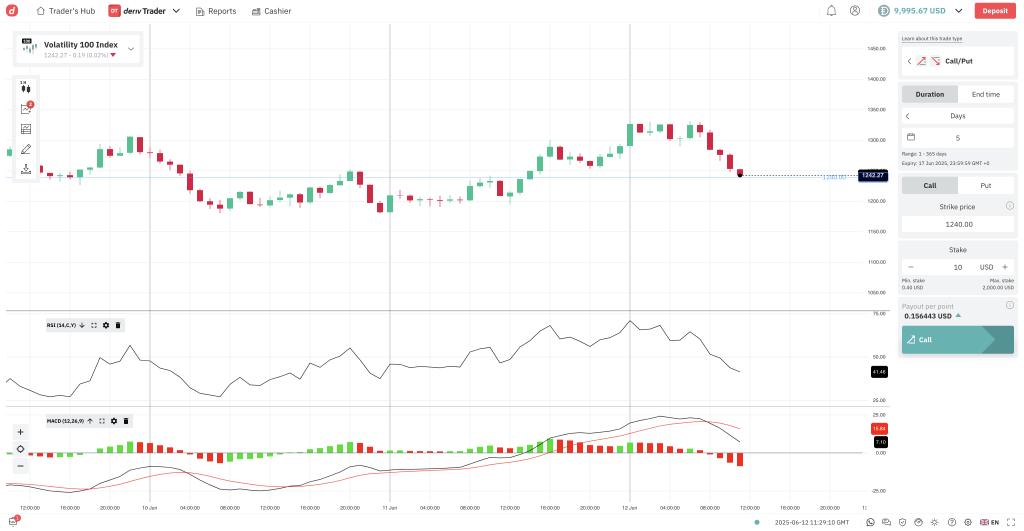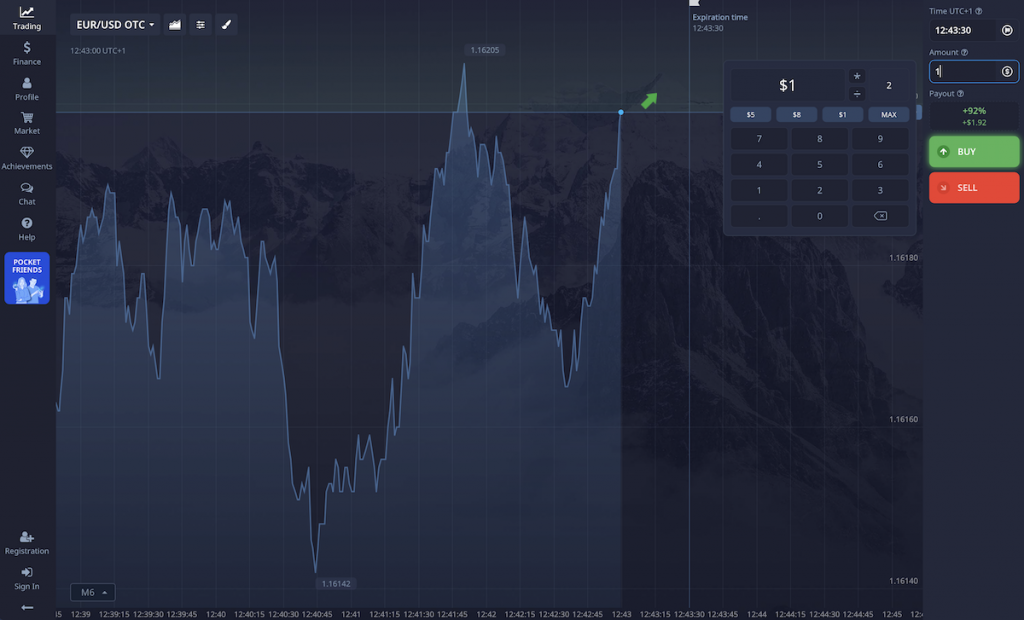Best Binary Options Brokers 2025


Binary options are popular for swing traders seeking clear outcomes and quick returns. But with countless brokers promising top-tier platforms, competitive payouts, and robust support, how do you separate the reliable from the risky?
We cut through the noise to highlight the best binary options brokers – trusted platforms that offer transparency, user-friendly tools, and the features swing traders need to succeed.
Binary Options Brokers for United States










How SwingTrading.com Chose The Best Binary Options Brokers
Our list of the best binary options brokers results from a thorough evaluation. It draws on detailed ratings from SwingTrading.com that incorporate over 200 distinct data points.
Our assessment focuses on 5+ key binary options-specific factors to ensure each platform is well-equipped to meet the needs of traders in this niche. Key criteria include payout percentages, trade expiry times, contract variety, and bonuses or incentives aimed at binary options traders.
Through rigorous hands-on testing, we’ve identified brokers that deliver strong overall performance – such as intuitive interfaces and responsive customer support – and excel in the features that matter most to binary options traders.
How To Choose A Binary Options Broker
Regulation & Safety
The importance of regulation and broker safety cannot be overstated when swing trading binary options.
Unlike short-term trades that expire in seconds or minutes, swing trading involves holding positions for several hours or even days—sometimes across weekends. This extended exposure amplifies your risk from market volatility and your reliance on the broker’s integrity, reliability, and adherence to fair trading practices.
Binary options brokers operate differently from traditional forex or equity brokers. Instead of managing spreads, margins, or stop-losses, you’re entering fixed-outcome trades with preset payouts.
This makes every aspect of the platform—expiry rules, asset availability, price feeds, and trade execution—critically important to your results. Even a slight adjustment to expiry timing or pricing can turn a winning swing trade into a loss.
However, the binary options industry has long been under scrutiny. Several major regulators—including ESMA in Europe, the UK’s FCA, ASIC in Australia, CIRO in Canada, and ISA in Israel—have banned or heavily restricted binary options for retail investors.
Despite these restrictions, binary options are still legally offered in certain regions. Some brokers continue to operate under the regulation of authorities like CySEC—though often limited to non-EU clients—or offshore entities such as the Seychelles FSA, the Labuan FSA in Malaysia, or Belize’s IFSC, where regulatory standards can vary and investor protections may be limited.
That’s why it’s crucial to choose brokers regulated by credible authorities with a clear track record of enforcing trader protection that includes segregated client funds, negative balance protection, transparent pricing, and reliable dispute processes.
The broker you choose must offer competitive payouts and expiry ranges and inspire confidence that your trades will be executed fairly, your funds are secure, and the platform won’t fail you when it matters most.
Binary Assets
When swing trading binary options, having access to a diverse range of underlying markets is essential. Unlike traditional investing, where you take ownership of assets, binary options allow you to speculate on price direction over a defined time frame—hours, days, or longer—without holding the asset.
This structure is especially appealing for swing traders. You’re targeting medium-term price movements using fixed-risk trades, often in response to chart patterns, economic data, or macro events.
Based on our tests, leading binary options brokers typically offer contracts tied to popular asset classes:
- Forex: Currency pairs like EUR/USD or GBP/JPY are among the most popular for swing traders in the binary space. For example, suppose you expect the euro to weaken after a dovish ECB press conference. In that case, you might enter a binary put option with a 48-hour expiry, targeting the move while avoiding overnight margin concerns.
- Stocks: While not all binary brokers offer equities, those that do enable you to capitalize on price movements around earnings announcements or product launches. Suppose Apple reports strong quarterly results—you could open a call option expiring in two or three days, expecting the stock to ride post-earnings momentum.
- Indices: Broader market indices like the S&P 500 or DAX are excellent for swing setups based on sentiment shifts. For instance, you might spot a technical bounce after a correction and place a multi-day binary call trade, anticipating a short-term recovery.
- Commodities: Instruments such as gold often exhibit multi-day trends driven by geopolitical tensions, central bank policies, or inflation data. For example, you might enter a binary call option on gold after a dovish Federal Reserve statement signals lower interest rates, expecting prices to rise over the next two or three days. Conversely, if inflation data is stronger than expected, you could take a binary put on gold, anticipating a short-term price drop within a similar multi-day expiry window.
- Cryptocurrencies: If you accept higher risk, digital assets like Bitcoin and Ethereum present volatile but potentially lucrative swing opportunities. You might enter a call option on BTC following a technical breakout on the daily chart, with a weekend expiry aligned with anticipated ETF-related news.
While the range of assets is broad, not all binary brokers offer equal depth. Some specialize in forex binaries, offering higher payouts and tighter spreads on major pairs. Others may focus on crypto or commodities, giving you access to niche markets and extended trading hours.
Testing different asset classes in a binary options demo account can help you refine your approach, understand the broker’s pricing logic, and find setups that align with your trading time frame and risk tolerance.
Trading Software
Your trading platform plays a crucial role when swing trading binary options. While forex and CFD brokers often support advanced platforms like MetaTrader 4 (MT4), MetaTrader 5 (MT5), cTrader, and TradingView, binary brokers typically offer proprietary, web-based platforms explicitly designed for fixed-outcome trading.
These platforms are streamlined and user-friendly, often prioritizing speed and clarity over technical depth. You’ll find simple interfaces with clearly marked strike prices, expiry times, and ‘Call’ or ‘Put’ buttons—ideal for fast execution. However, they lack features like custom indicators and automated trading.
In my experience, this simplicity works well for quick setup and execution. For instance, while swing trading EUR/USD ahead of an ECB decision, I placed a 48-hour binary ‘Put’ trade in seconds. But in another case, while analyzing a multi-day setup on gold, I had to work around the platform’s limited expiry choices—highlighting a key constraint for longer-term trades.
Because of these limitations, you might want to use TradingView or similar tools for analysis and then place trades on the broker’s native platform. This combo offers the best of both worlds: robust technical analysis and fast, structured execution.
Ultimately, the best platforms for binary swing traders combine clean execution with access to multi-day expiries, stable price feeds, and responsive performance—even if they aren’t packed with advanced tools.

DerivTrader is a user-friendly proprietary platform with flexible contract options
Margin & Leverage
Unlike forex or CFD trading, margin and leverage don’t apply in the traditional sense when trading binary options. In a standard margin trade—like buying EUR/USD with leverage on MT4—you borrow capital to amplify your position size.
This increases your potential profits and losses, and you’re responsible for managing margin requirements, stop-out levels, and rollover fees.
Binary options work differently. You don’t borrow capital or control a larger position than your deposit allows. Instead, you stake a fixed amount on a simple outcome—whether the price of an asset will be above or below a certain level at expiry.
Your risk and reward are predefined, and you can’t lose more than your initial stake, effectively removing traditional margin mechanics from the equation.
While binary options don’t offer leverage in the technical sense, they can replicate leveraged outcomes due to their high payout structure.
For instance, if a broker provides an 85% return on a successful trade, a $100 investment can yield $185 in just a few days if your prediction is correct—mirroring the kind of return you might see from a leveraged forex position, but with a capped downside.
In one of my swing trades on gold binaries, I took a 72-hour ‘Call’ position following a soft US inflation report, expecting gold to rally. I risked $150 with an 80% payout. Had I traded this move using leverage in a CFD account, I’d have needed to manage margin levels, set stop-losses, and factor in overnight financing fees. With binaries, none of that applied—my risk was capped, and I simply needed gold to finish above the strike level at expiry.
The lack of margin calls or liquidation risk makes binary options more accessible for beginners, but it doesn’t mean the risk is lower.
Because you lose 100% of your stake if the trade finishes out-of-the-money, poor trade selection or overtrading can deplete your account quickly—especially when swing trading over longer durations where more variables come into play.
Some brokers also offer multi-leg or ladder binary options, which allow you to build more advanced positions with varied outcomes and payout structures. While not traditional margin, these setups let you scale exposure in stages—another way to simulate leveraged positioning.

PocketOption allows flexible trade sizes starting from just $1
Fees
When trading binary options, fees are structured differently than in forex and CFD trading. Traditional markets typically charge spreads, commissions per trade or lot, and overnight swap fees, which can erode profits, particularly on longer swing trades.
With binary options, there are no spreads or commissions in the conventional sense. Instead, your cost is built into the payout percentage.
For example, if you risk $100 on a binary trade with an 80% payout, your maximum return is $180—but if the trade expires out-of-the-money, you lose the full $100. That embedded risk-to-reward ratio is where the broker’s ‘fee’ lives.
This fixed-cost model adds clarity. In one of my trades, I placed a 3-day ‘Call’ on gold after a dovish tone in the FOMC minutes suggested inflation concerns were easing. I didn’t need to factor in spreads or overnight charges—just the strike price and expiry outcome. That kind of simplicity can be an advantage for swing traders.
However, not all binary brokers we’ve evaluated offer equal value. Some reduce payouts during high-volatility periods or apply withdrawal and inactivity fees, which can affect long-term returns. A broker consistently offering 85–90% payouts on significant assets is likely more cost-effective than one offering 65%—even if both appear ‘free’ to trade on the surface.
While binary options don’t involve traditional trading fees, the ‘cost’ of trading still exists—it’s just baked into the risk/reward setup. When you hold positions over multiple days, high, consistent payouts and transparent broker terms are key to profitability.
Bottom Line
Selecting the right binary options broker is more than flashy payouts. You want a platform that’s legitimate, user-friendly, and aligned with your trading style. For swing traders, this means prioritizing brokers that offer longer expiry times, stable platforms, and transparent terms.
Focus on brokers regulated in reputable jurisdictions or with a strong track record of trust. Look for high, consistent payout rates, reliable price feeds, and smooth trade execution. A good provider should also support secure account management, responsive customer service, and fast, hassle-free withdrawals.
Finally, don’t underestimate the value of testing the platform through a binary demo account. It’s always best to gauge whether the broker meets your needs before putting real capital at risk.
FAQ
Should I Only Use A Regulated Binary Options Broker?
Ideally, yes—but in practice, it’s not always possible. Many top-tier regulators like the FCA, ASIC, and CySEC have banned or restricted binary options for retail traders due to fraud concerns and high-risk structures. That means most remaining brokers operate offshore, often without formal oversight.
This doesn’t mean every unregulated broker is a scam, but it does increase your risk. If you choose to trade with an offshore broker, it’s essential to do your homework—look into their reputation, test withdrawals, and make sure their terms are transparent and fair.
